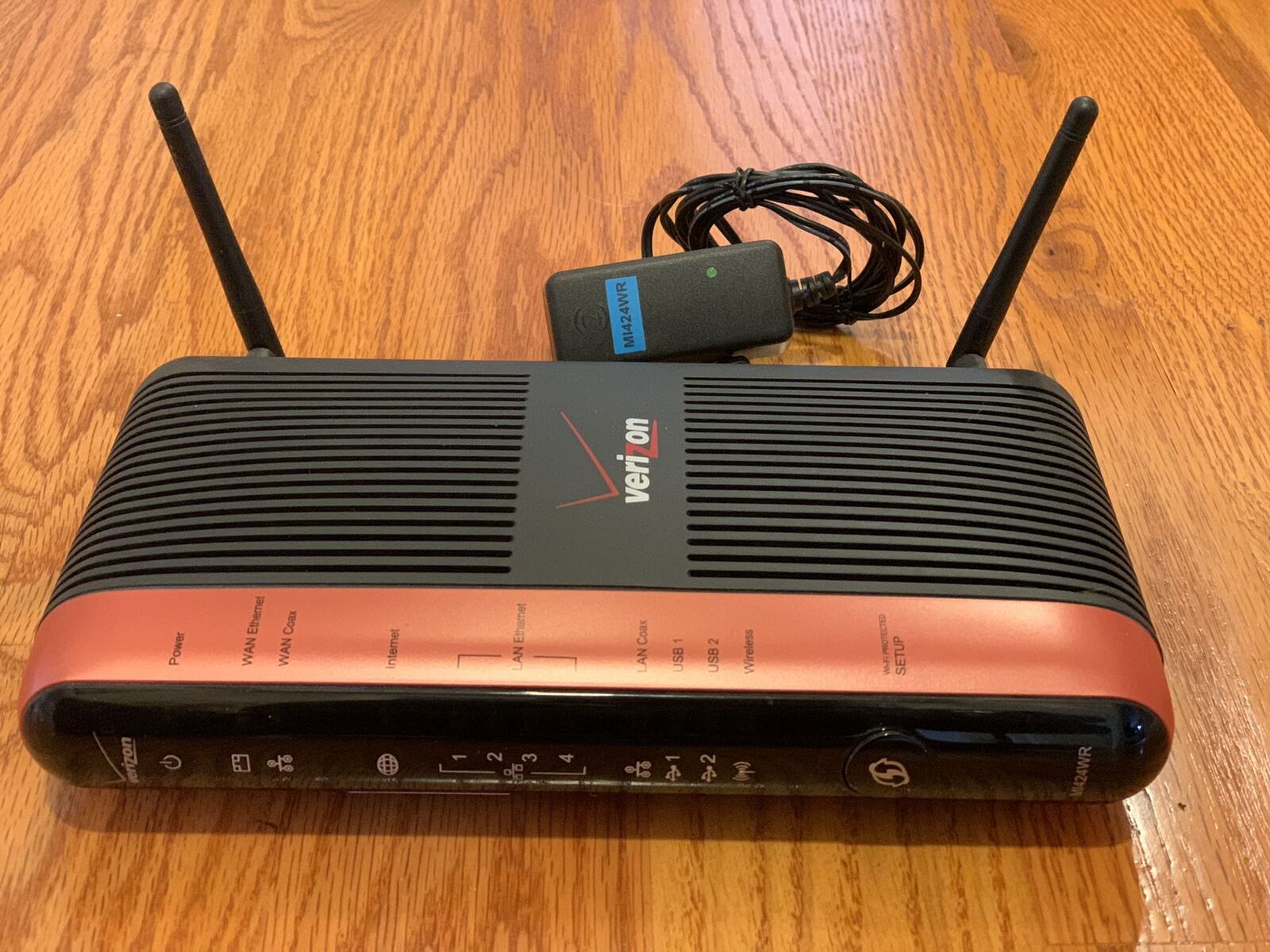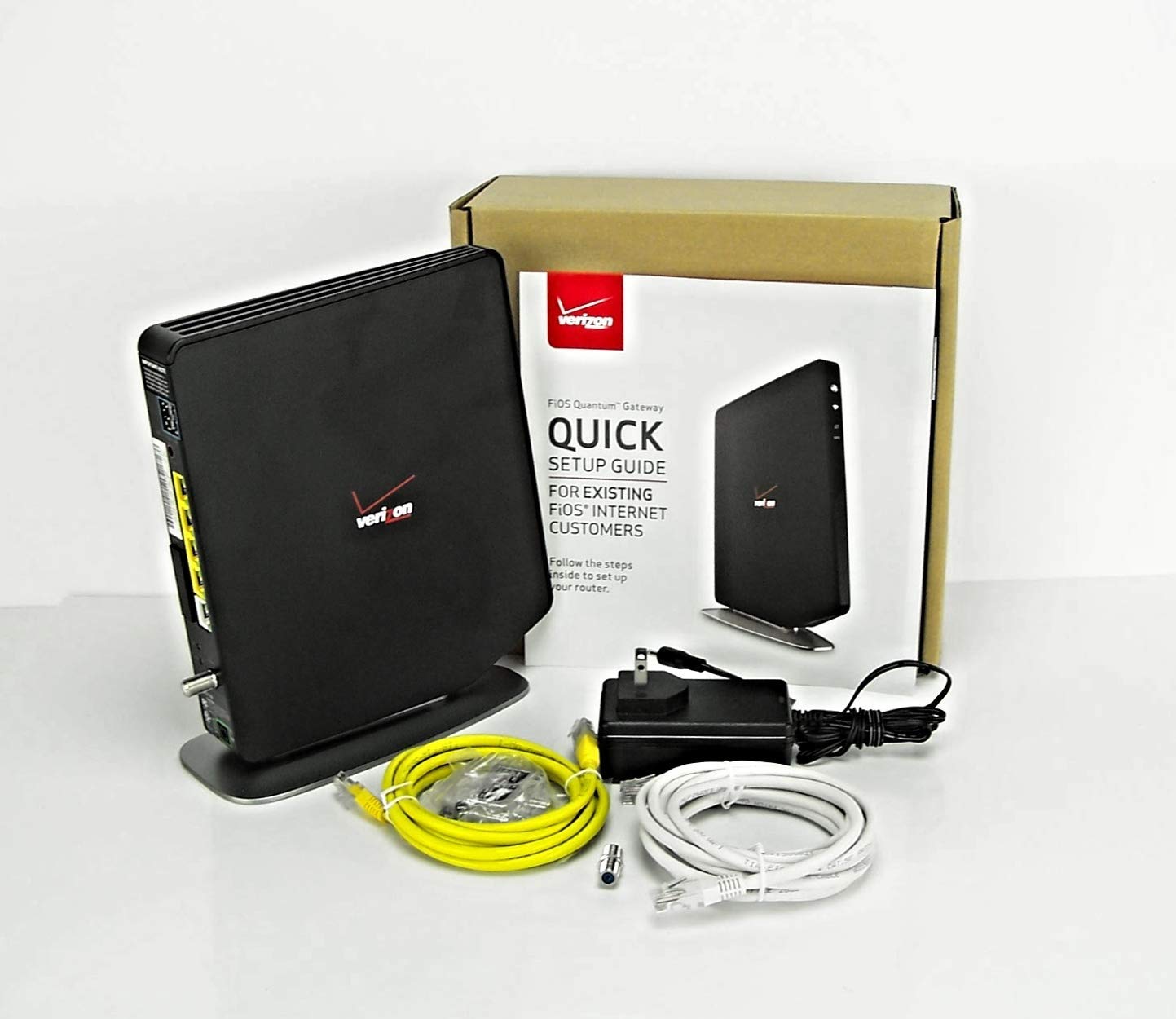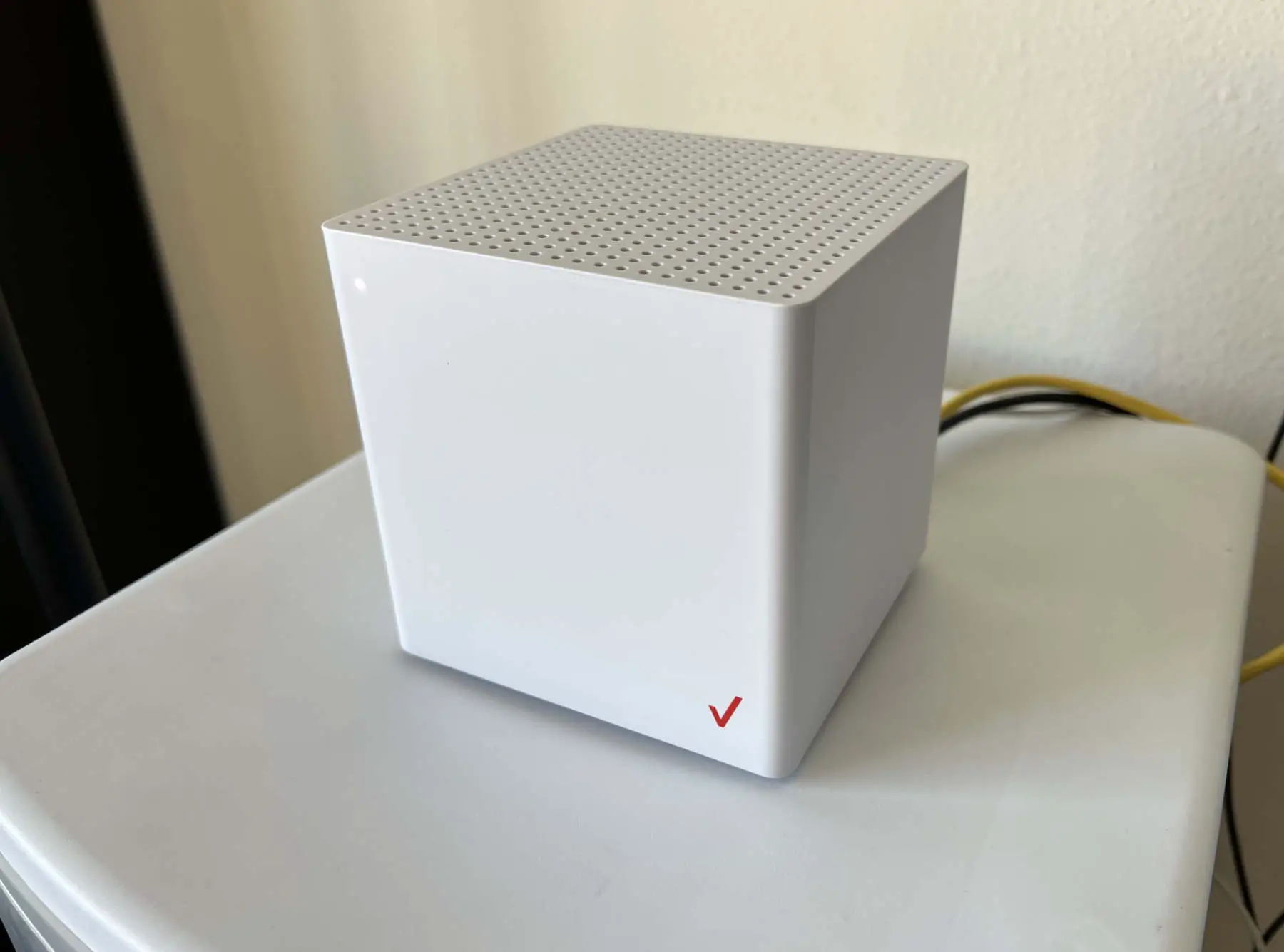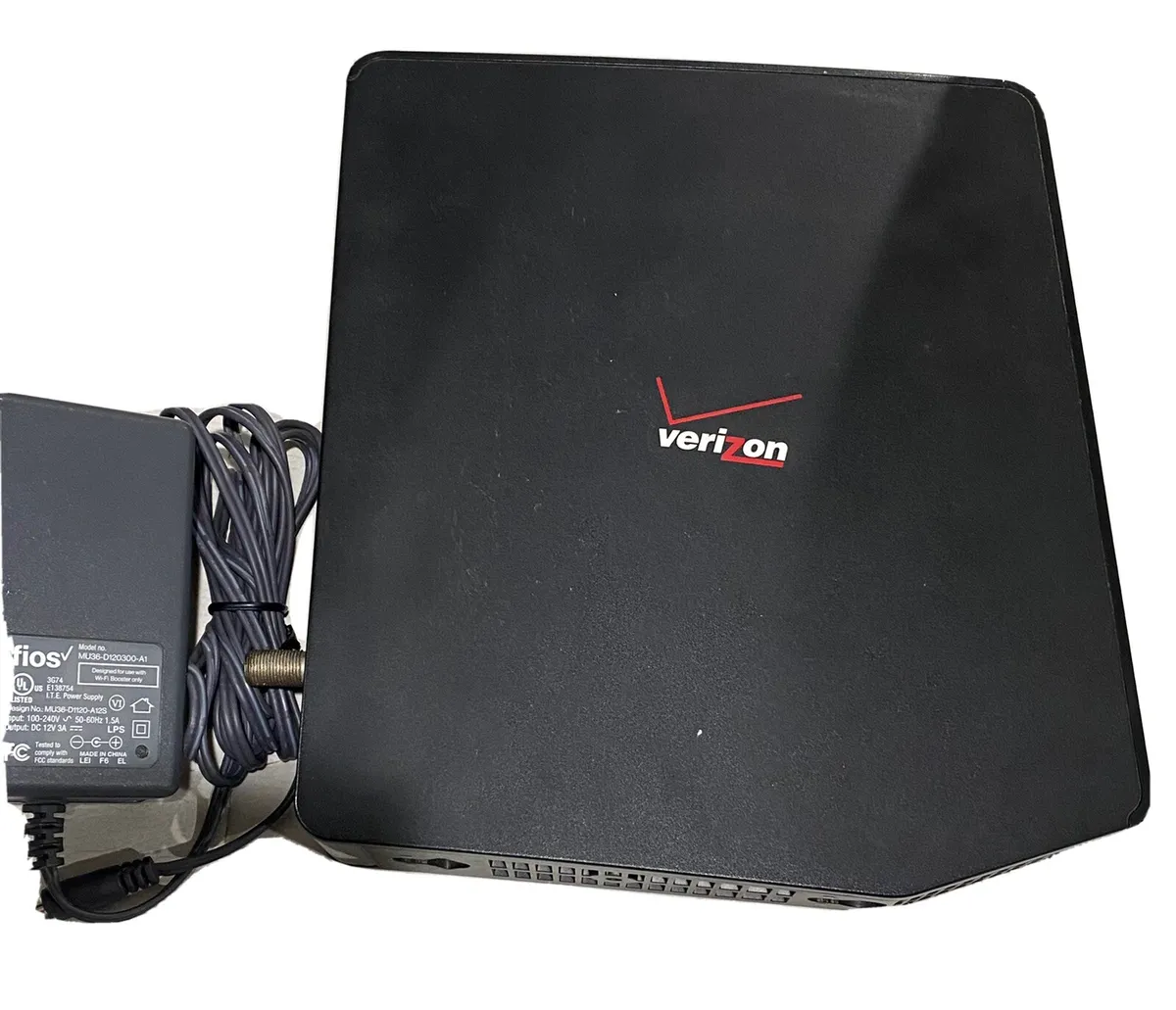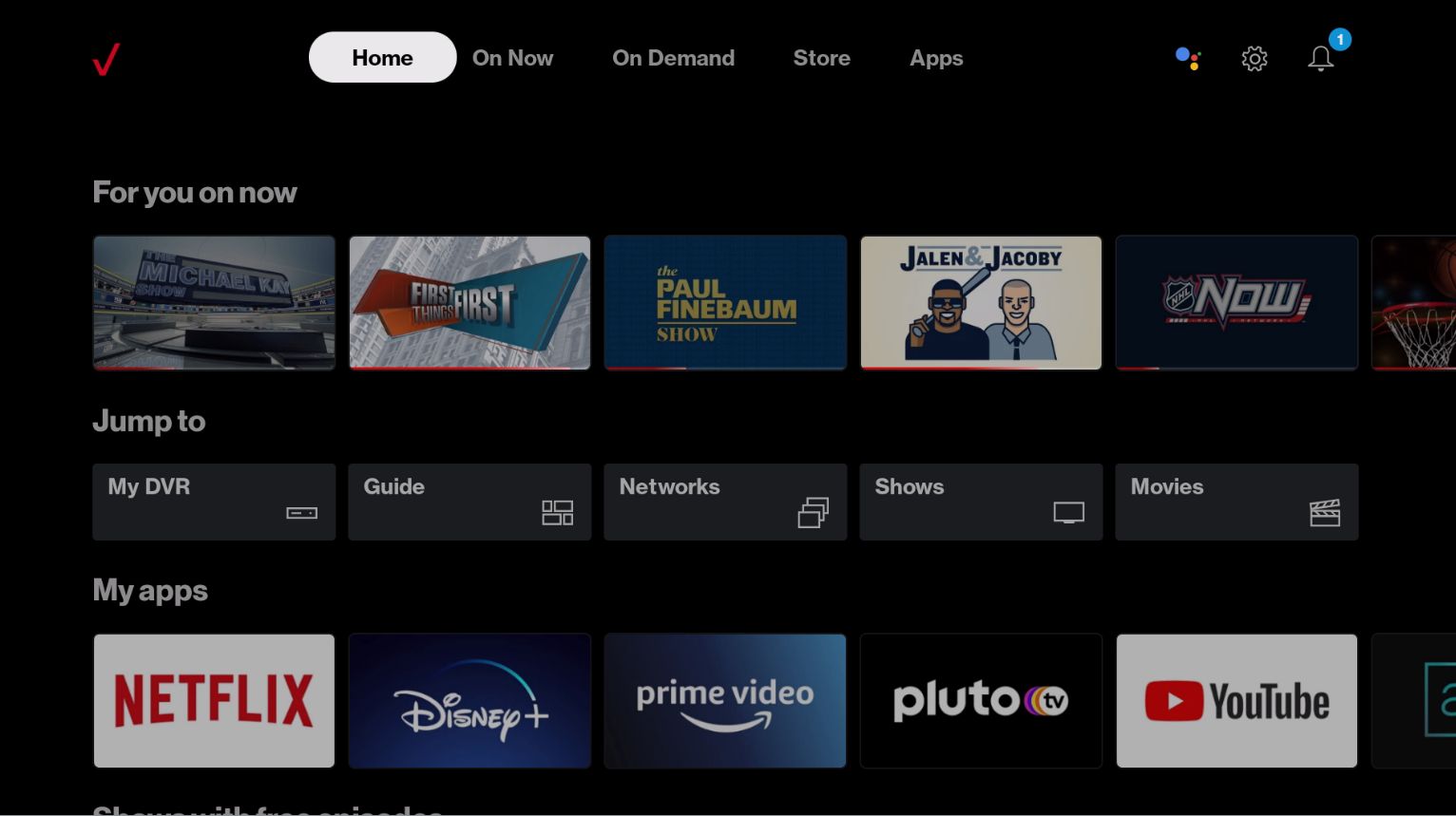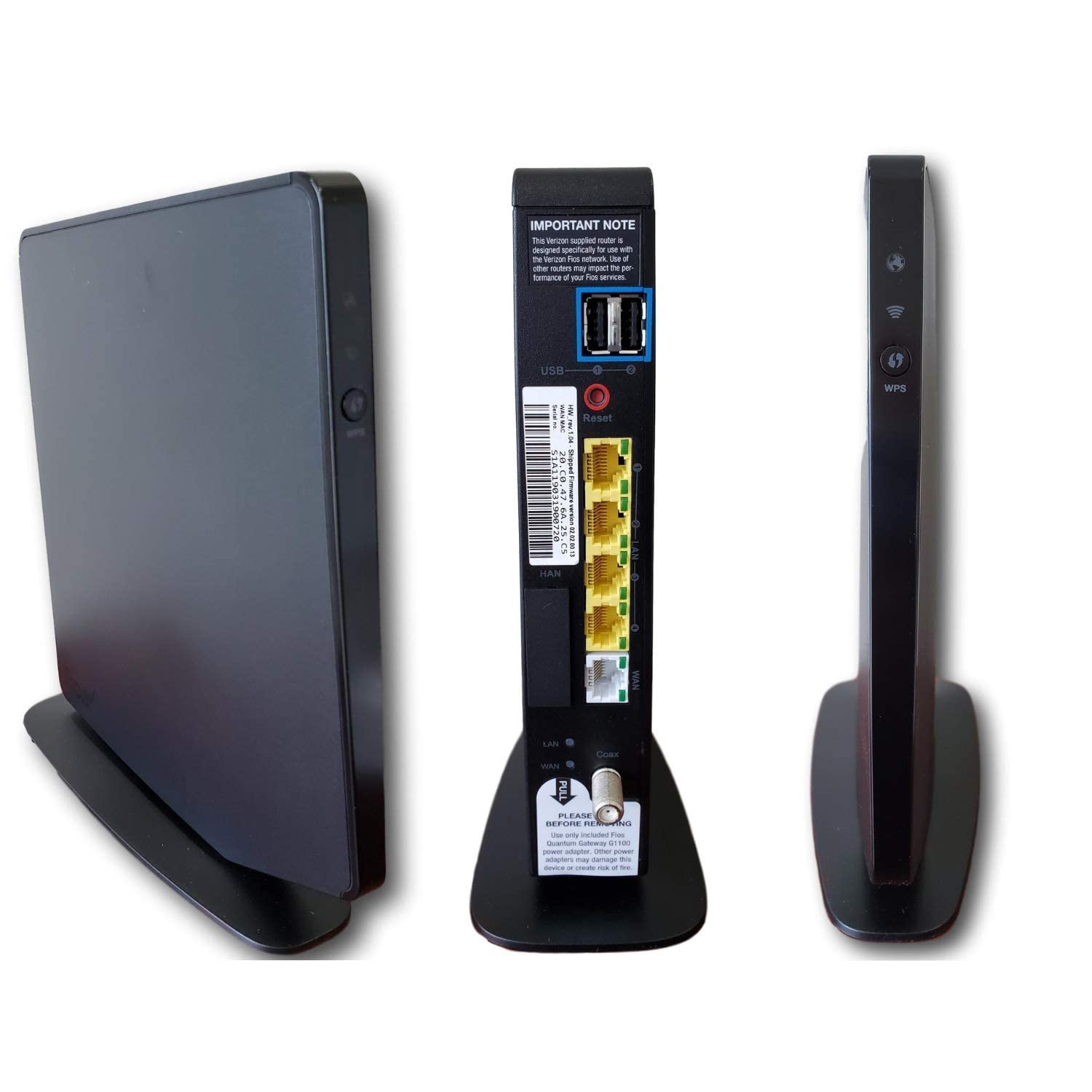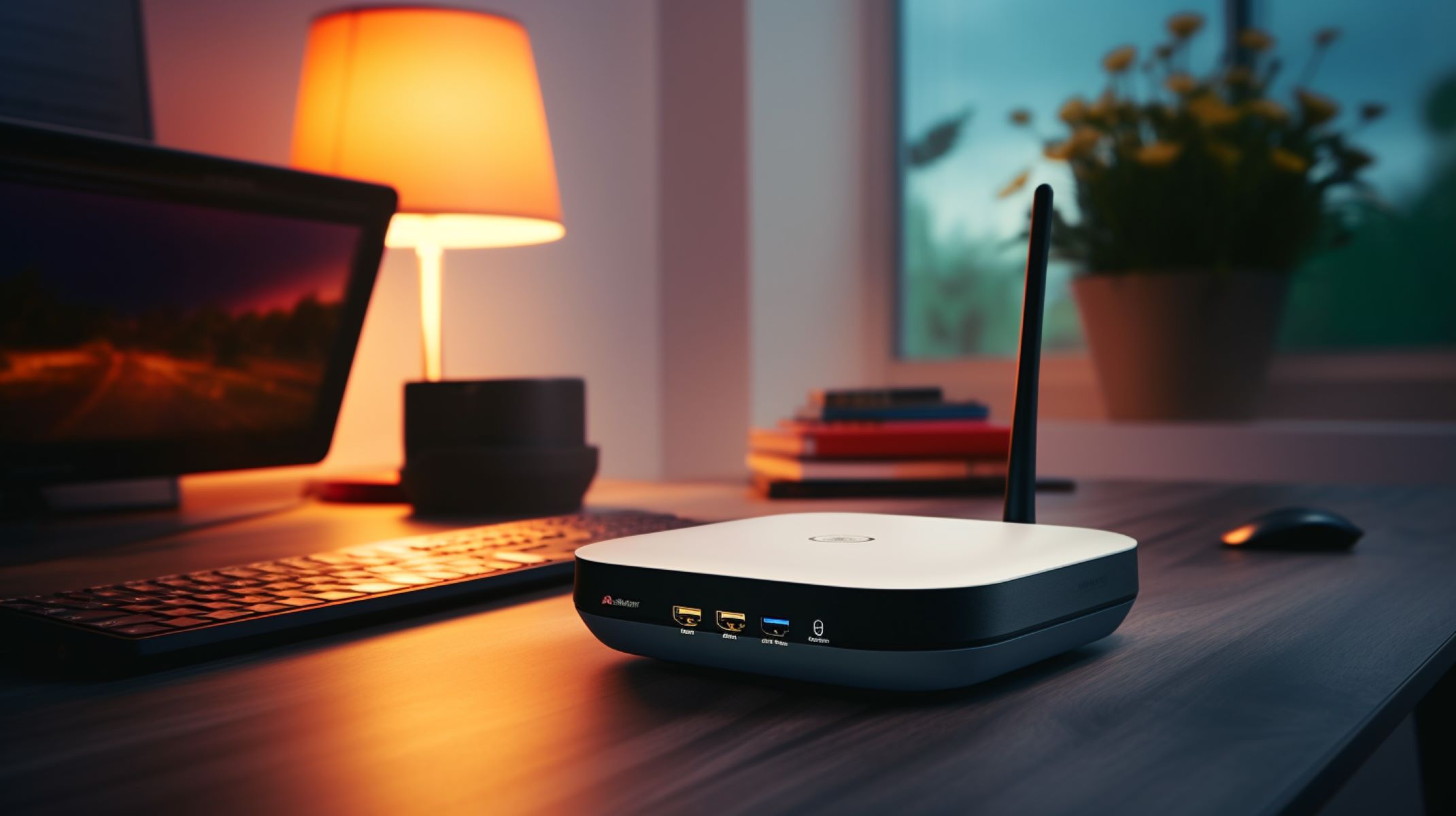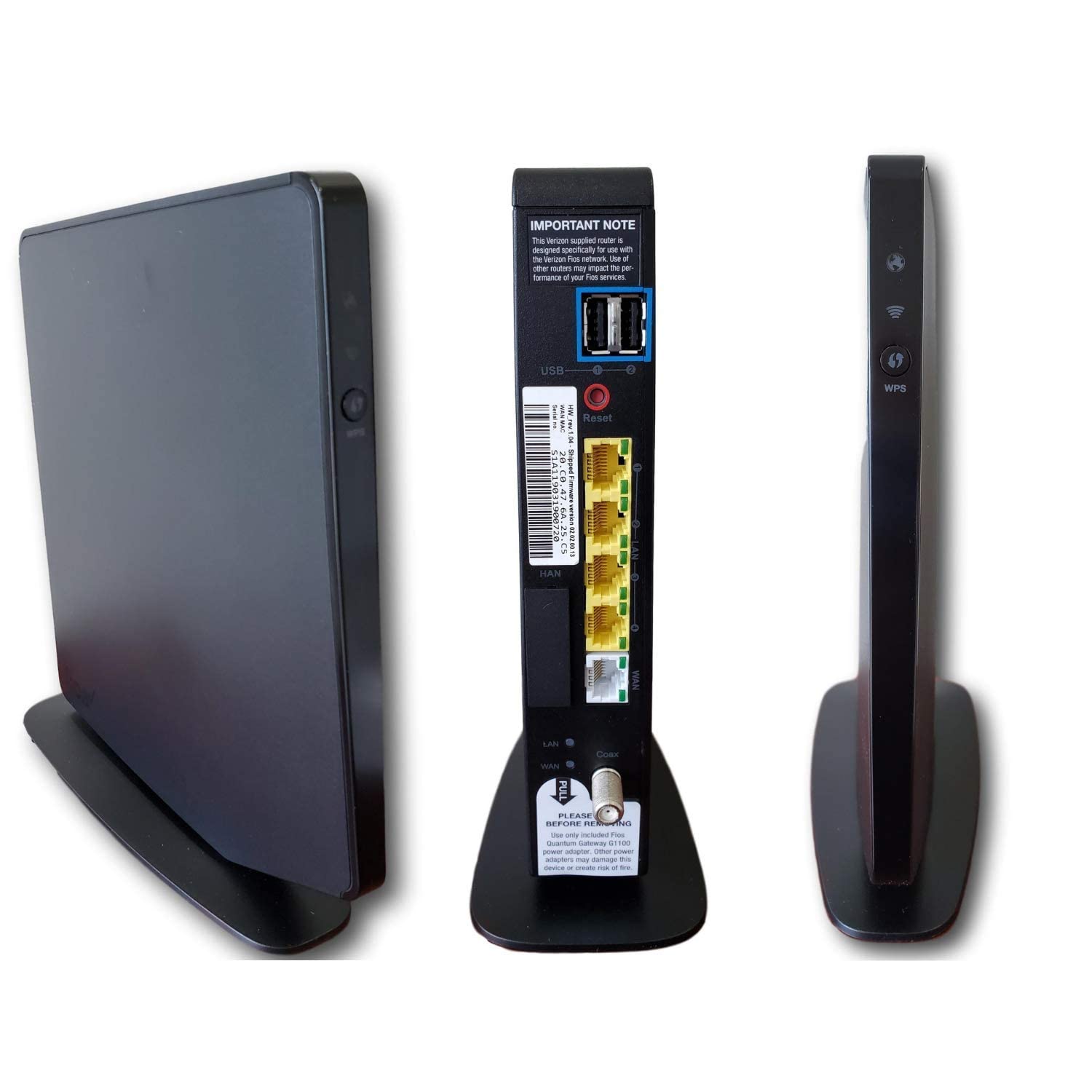Introduction
Welcome to the world of Verizon Fios! If you’re looking to set up your Verizon Fios wireless router, you’ve come to the right place. In this guide, we’ll walk you through the step-by-step process to connect your router and get your wireless network up and running.
Verizon Fios provides high-speed internet connectivity, crystal-clear voice services, and high-quality TV programming, all delivered through a fiber-optic network. With the Verizon Fios wireless router, you can enjoy fast and reliable internet access and connect multiple devices to your network wirelessly.
Setting up your Verizon Fios wireless router is a simple and straightforward process. Whether you’re a novice or an experienced user, you’ll have your network up and running in no time. In the following steps, we’ll guide you through connecting the router to power, linking it to your existing modem, and configuring the necessary settings for personalized network customization.
Before we dive into the steps, make sure you have the following items handy: your Verizon Fios wireless router, power adapter, Ethernet cable, and your computer or mobile device with Wi-Fi capabilities. With these items on hand, let’s get started!
Step 1: Connect the Router to Power
The first step to connect your Verizon Fios wireless router is to provide it with power. Locate an easily accessible power outlet near your router’s intended placement and plug in the router’s power adapter.
Ensure that the power outlet is functional and turned on. You may need to press the power button on the router itself to turn it on, or some models may power on automatically once connected to a power source.
Once the router is powered on, you will typically see indicator lights or a display panel that shows it’s operational. These lights or the display will provide vital information such as power status and connection status, helping you troubleshoot any potential issues.
Make sure you allow the router a few minutes to fully power on and establish a stable connection. During this time, avoid pressing any buttons or resetting the device as it may disrupt the initial setup process.
It’s important to place your router in a central location within your home or office to ensure optimal coverage and Wi-Fi signal strength. Avoid placing the router in areas with obstructions such as walls or furniture that could hinder the wireless signal’s reach. If you have a multi-story building, consider placing the router on an upper level for better coverage on all floors.
Keep in mind that the router’s placement may vary depending on the specific model you have. Some routers offer wall-mounting options, while others are designed to sit flat on a surface. Refer to your router’s user manual for specific instructions on the best placement and mounting options.
With the router connected to power and properly positioned, you are now ready to proceed to the next step: connecting the router to your modem.
Step 2: Connect the Router to Your Modem
Now that your Verizon Fios wireless router is powered on, it’s time to establish a connection between the router and your modem. This connection will allow your router to access the internet and provide wireless connectivity to your devices.
Locate the Ethernet cable that came with your Verizon Fios wireless router. One end of the cable should have an Ethernet port, while the other end may have a larger connector designed to fit into your modem.
With your modem powered on, locate the Ethernet port on the back of the modem. It’s usually labeled as “Internet,” “WAN,” or may have an icon representing an Earth or globe. Insert one end of the Ethernet cable into this port, ensuring a snug fit.
Next, locate the corresponding Ethernet port on the back of your Verizon Fios wireless router. It’s usually labeled as “WAN,” “Internet,” or may have a different color than the other ports. Insert the other end of the Ethernet cable into this port.
Once the Ethernet cable is securely connected to both the modem and the router, you should see the corresponding indicator lights on both devices illuminate. These lights indicate a successful physical connection between the modem and the router.
If you have multiple Ethernet ports on your modem, double-check that you’ve connected the Ethernet cable to the correct port. The designated port may vary depending on your modem’s manufacturer and model, so consult the user manual if you’re unsure.
Now that your router is successfully connected to your modem, it’s time to move on to the next step: connecting your device to the router’s Wi-Fi network.
Step 3: Connect Your Device to the Router’s Wi-Fi Network
With your Verizon Fios wireless router powered on and connected to your modem, it’s time to connect your devices to the router’s Wi-Fi network. This will enable you to enjoy wireless internet connectivity on your computer, smartphone, tablet, or any other Wi-Fi-enabled device.
On your device, navigate to the network settings menu. This can usually be found in the settings app or by clicking on the Wi-Fi icon located in the taskbar or notification area.
In the list of available networks, locate and select your router’s network name (also known as the SSID). The network name is typically displayed on a sticker attached to your router or can be found in the router’s user manual.
If prompted, enter the network password. This password is usually provided on a sticker attached to the router as well or can be found in the router’s user manual. Make sure to enter the password correctly, as Wi-Fi passwords are case-sensitive.
Once connected, your device should display a confirmation message or a Wi-Fi signal icon in the status bar, indicating a successful connection to the router’s network.
It’s recommended to adjust your device settings to automatically connect to the router’s network in the future. This way, you won’t have to manually select the network every time you want to connect.
Repeat the above steps for all the devices you want to connect to your Verizon Fios wireless router. Most routers support multiple simultaneous connections, allowing you to connect multiple devices without any issues.
Now that you’ve successfully connected your device to the router’s Wi-Fi network, it’s time to move on to the next step: setting up your router’s configuration settings.
Step 4: Set Up Your Router’s Configuration Settings
After connecting your device to the Verizon Fios wireless router’s Wi-Fi network, it’s time to configure the router’s settings to ensure optimal performance and security.
To access your router’s configuration settings, open a web browser on your connected device and enter the router’s IP address in the address bar. The IP address is usually printed on the router itself or can be found in the router’s user manual. Press Enter to access the router’s login page.
On the login page, enter the router’s default username and password. These credentials are often listed on the router or can be found in the user manual. If you have previously changed the login credentials, enter the updated username and password.
Once logged in, you will have access to the router’s configuration dashboard. Here, you can customize various settings, including wireless network settings, security settings, and advanced features.
It’s recommended to change the default network name (SSID) to a unique and easily identifiable name. This will make it easier for you to recognize your network among others in the vicinity. You can also enable network encryption, such as WPA2, to protect your network from unauthorized access.
Within the settings, you may also have the option to set up guest networks, which allow visitors to access the internet without giving them access to your main network.
Additionally, you can explore advanced settings, such as parental controls, port forwarding, and quality of service (QoS) features. These settings allow you to customize your network to suit your specific needs and optimize performance.
Remember to save any changes you make in the router’s configuration settings. This will ensure that your modifications are applied and take effect.
Once you have adjusted the desired settings and saved your changes, your Verizon Fios wireless router is configured and ready to provide a personalized and secure wireless network for your devices.
Now that you’ve set up your router’s configuration settings, it’s time to move on to the next step: customizing your network’s name and password.
Step 5: Customize Your Network’s Name and Password
Now that you have set up your Verizon Fios wireless router’s configuration settings, it’s time to customize your network’s name and password. This will add a personal touch to your network and enhance its security.
Access the router’s configuration dashboard by opening a web browser on your connected device and entering the router’s IP address in the address bar. Log in using the appropriate username and password.
Navigate to the wireless settings section, where you will find options to modify the network name (SSID) and password. Choose a unique and memorable network name that reflects your personality or the location of your network.
It’s important to create a strong and secure password to protect your network from unauthorized access. Use a combination of uppercase and lowercase letters, numbers, and special characters. Aim for a password that is at least 8-12 characters long to ensure sufficient complexity.
Once you have chosen a new network name and password, save the changes in the router’s configuration settings. It may take a few seconds for the modified settings to take effect.
After saving the changes, your devices will need to reconnect to the network using the new network name and password. Access the Wi-Fi settings on each device, locate your network’s new name (SSID), and enter the updated password to establish a connection.
Remember to update the network name and password on all your devices that were previously connected to the network. This includes smartphones, tablets, computers, smart TVs, and any other Wi-Fi-enabled devices.
By customizing your network’s name and password, you add a personal touch while also enhancing the security of your network. This step ensures that only authorized users can connect to your network, keeping your personal data and internet access secure.
Now that you have customized your network’s name and password, it’s time to move on to the next step: configuring advanced settings if desired.
Step 6: Configure Advanced Settings if Desired
After customizing your network’s name and password, you have the option to further enhance and customize your network by configuring advanced settings on your Verizon Fios wireless router.
Access the router’s configuration dashboard by opening a web browser on your connected device and entering the router’s IP address in the address bar. Log in using the appropriate username and password.
Within the advanced settings section, you’ll find a range of options to tailor your network to your specific needs.
One of the advanced features you may want to explore is parental controls. This feature allows you to restrict certain content or set time limits on internet access for specific devices. It’s especially useful for households with children, ensuring a safe and controlled online environment.
Another advanced setting to consider is port forwarding. This feature enables you to open specific ports on your router, allowing certain applications or services to bypass your router’s firewall and establish more direct connections.
Quality of Service (QoS) is yet another advanced feature that lets you prioritize certain types of network traffic over others. This can be useful if you have bandwidth-intensive applications such as online gaming or video streaming that require a stable and uninterrupted connection.
Some routers may also offer advanced security settings, such as firewall configurations, MAC address filtering, or virtual private network (VPN) support. These settings provide additional layers of protection and control over your network’s access and traffic.
It’s important to note that not all routers will have the same advanced settings or features. The specific options available to you may vary depending on the model and manufacturer of your Verizon Fios wireless router.
Take some time to explore the various advanced settings and features available in your router’s configuration dashboard. Experiment with different options to customize your network based on your preferences and requirements.
Once you have configured the desired advanced settings, remember to save any changes made in the router’s configuration settings for them to take effect.
With advanced settings configured to your liking, your Verizon Fios wireless router is now optimized to deliver the best possible network performance and security according to your preferences and needs.
Congratulations! You have successfully completed the process of connecting and setting up your Verizon Fios wireless router. Enjoy your high-speed, reliable, and secure internet connection!
Conclusion
Congratulations! You have successfully set up your Verizon Fios wireless router and created a personalized and secure network for your devices. By following the step-by-step process outlined in this guide, you have connected the router to power, linked it to your modem, connected your devices to the Wi-Fi network, configured the router’s settings, customized the network name and password, and explored advanced settings if desired.
With your Verizon Fios wireless router in place, you can now enjoy high-speed internet access, reliable connection, and seamless wireless connectivity on all of your devices. Whether you’re browsing the web, streaming your favorite shows and movies, or engaging in online gaming, your router is designed to provide a smooth and efficient experience.
Remember to periodically check for firmware updates for your router. These updates often include important security patches and performance improvements, ensuring that you continue to have the best possible experience with your Verizon Fios wireless router.
If you encounter any technical issues or have questions about your Verizon Fios services, contact Verizon’s customer support team. They will be able to provide guidance and assistance to resolve any concerns you may have.
Thank you for choosing Verizon Fios and taking the time to set up your wireless router. We hope this guide has been helpful in getting your network up and running smoothly. Enjoy the benefits of fast, reliable, and secure internet connectivity!







